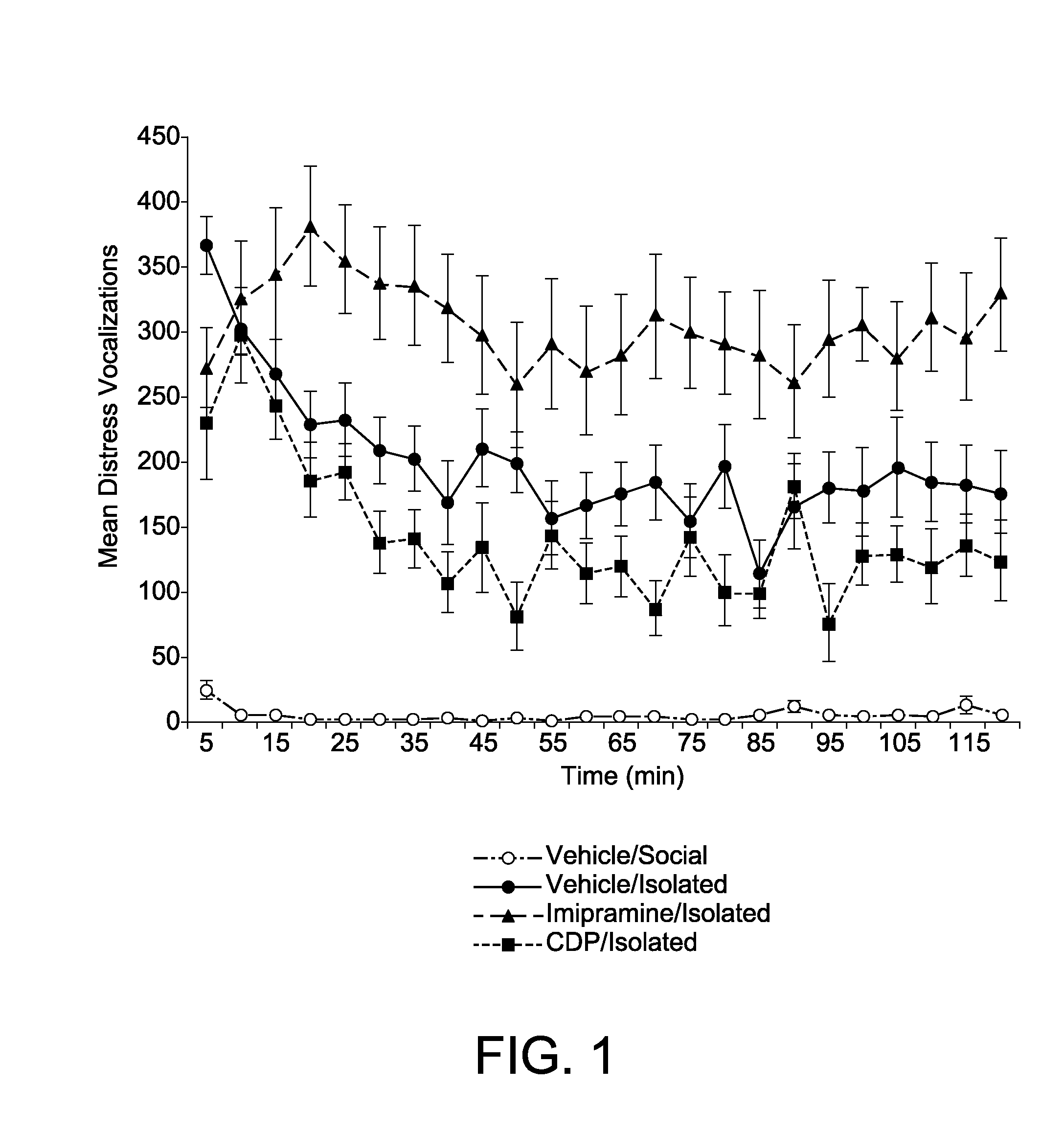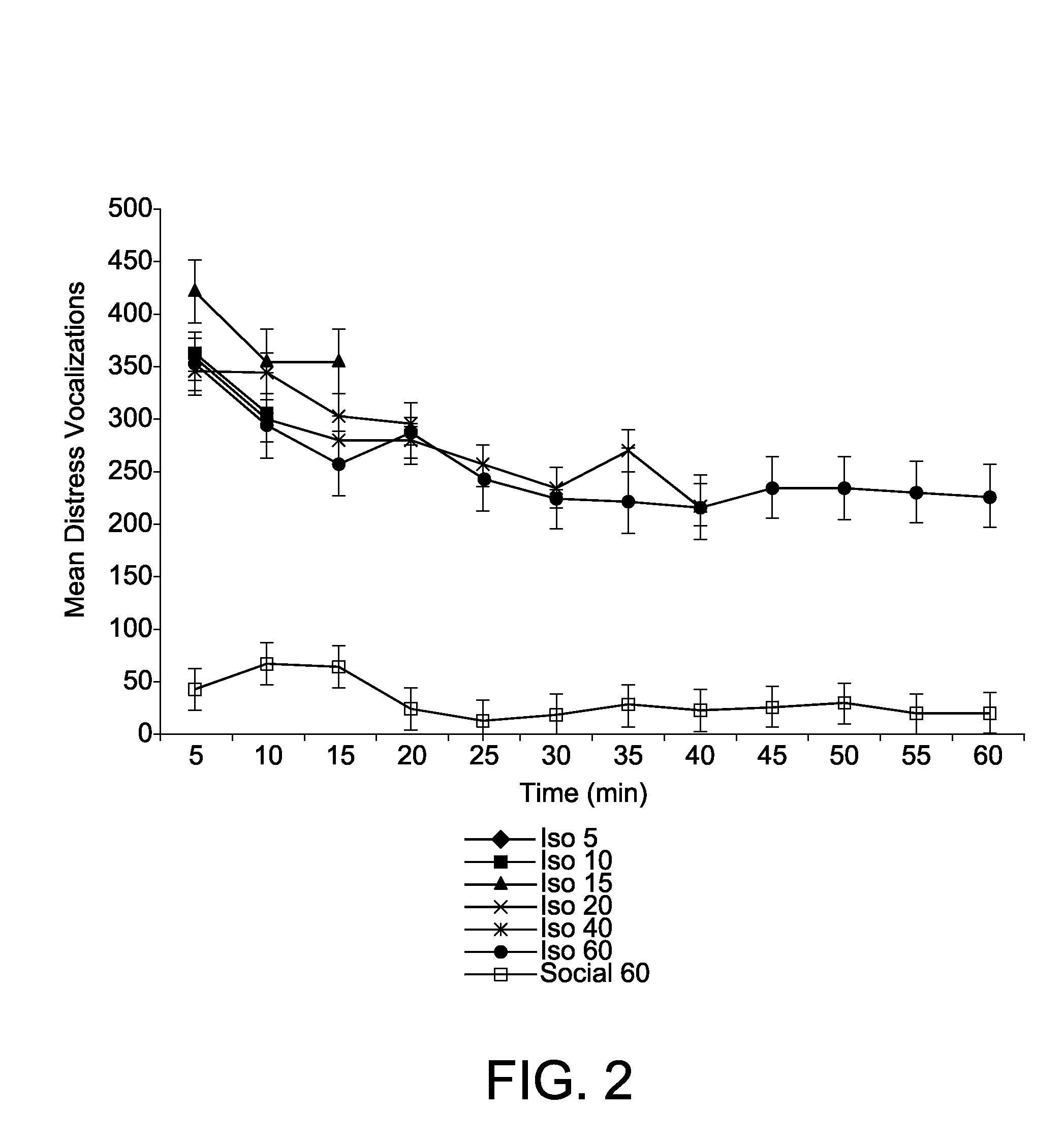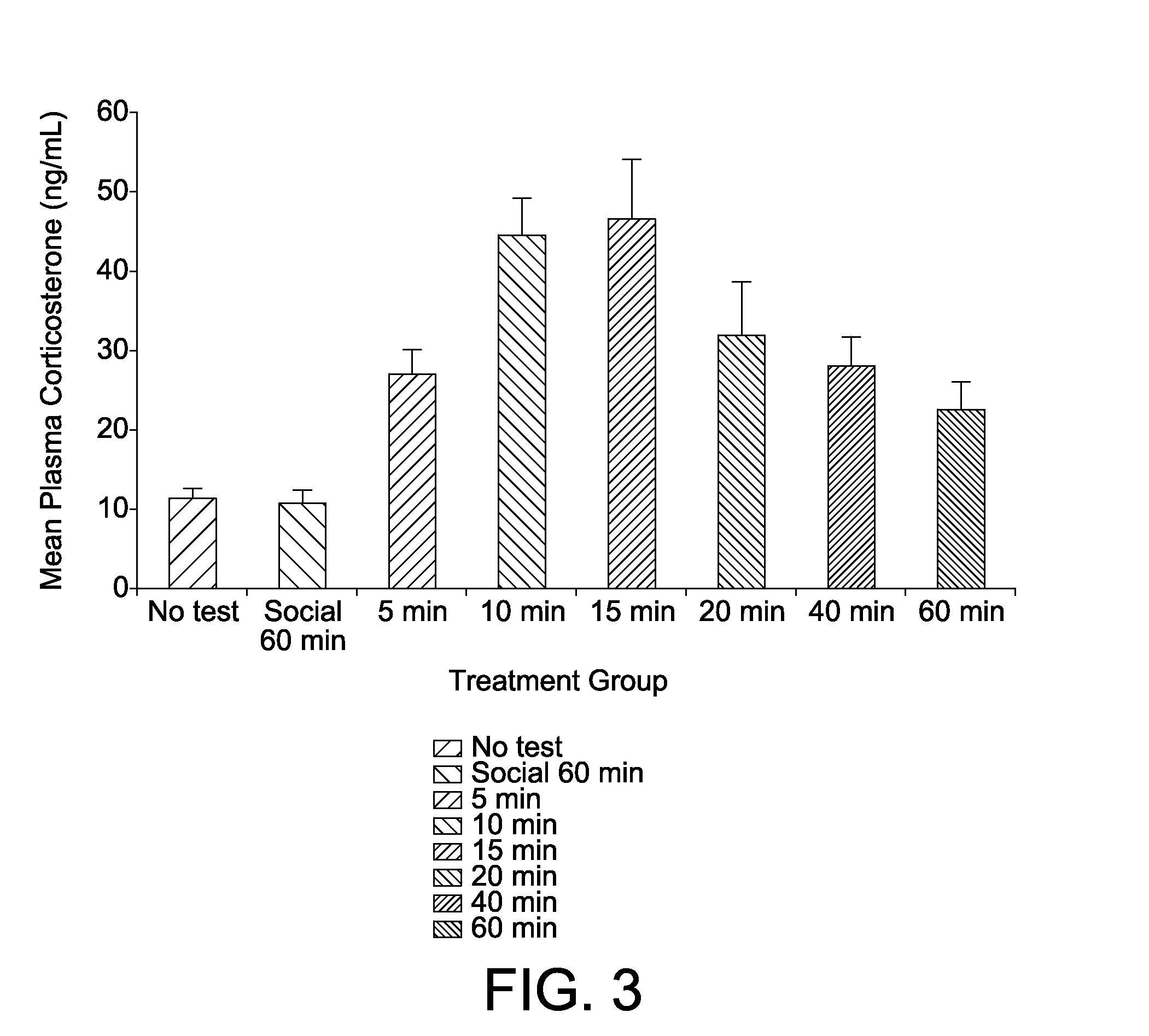Animal model of anxiety and depression
a technology applied in the field of animal models of anxiety and depression, can solve the problems of displaying significant relapse rates, labor-intensive and time-consuming rodent models, and being difficult to condu
- Summary
- Abstract
- Description
- Claims
- Application Information
AI Technical Summary
Benefits of technology
Problems solved by technology
Method used
Image
Examples
example 1
[0054]Subjects.
[0055]Cockerels (Gallus gallus, strain W-36; Cal-Maine Foods, Mendenhall, Miss., USA) were obtained 1 day posthatch and housed in stainless steel cages (34×57×40 cm) at a population density of 12 chicks per cage. Food (Purina Start and Grow, St. Louis, Mo., USA) and water were available ad libitum through a 1-quart gravity-fed feeders and waterers. Room temperature was maintained at 29+1° C. and overhead florescent illumination was maintained on a 12-h light-dark cycle provided by fluorescent overhead lighting.
[0056]Apparatus.
[0057]A six-unit test apparatus containing Plexiglas viewing chambers (25×25×22 cm) situated in sound-attenuating enclosures was used for behavioral data collection. The units were illuminated using 25-W light bulbs and ventilated by an 8-cmdiameter rotary fan. Miniature video cameras mounted at floor level in the corner of the enclosures allowed for animal observation. Microphones that mounted at the ceiling of the Plexiglas chamber were connect...
example 2
[0062]Corticosterone is a biological marker of stress in animals and my laboratory have used this marker to provide convergent validity of the chick separation stress paradigm as a model of anxiety (M. W. Feltenstein et al. Corticosterone Response In The Chick Separation-Stress Paradigm, 78 Physiol. Behav. 489-93 (2003)). In Example 2, I attempt to provide evidence of convergent validity to the model by quantifying the pattern of corticosterone response in chicks during the three phases of the test session (i.e., initial protest, behavioral despair and learned helplessness). Because no appreciable changes were detected in DVoc rates during the last 90-100 minute, the test session was shortened to one hour in length in Example 2.
[0063]Subject and test apparatus were as described in Experiment 1. Tests were conducted 4-5 days posthatch and in the first third of the light portion of the 12:12 light-dark cycle. The experimental design consisted of 7 treatment conditions that included on...
example 3
5 Day Drug Probe Studies
[0081]Subjects and Housing Procedures.
[0082]Cockerels (Gallus gallus; W36; Cal-Maine Foods, Inc.; Mendenhall, Miss.) were received one-day posthatch and housed in 34×57×40 cm stainless steel cages with 12-13 chicks per cage. Food (Purina Start and Grow, St. Louis, Mo.) and water were available ad libitum through one quart gravity-fed feeders (Murray MacMurray; Model 4BGFJ) and waterers (Murray MacMurray; Model 4YQW0). Room temperature was maintained at 29±1° C. and overhead illumination was maintained on a 12 hr light-dark cycle. Daily maintenance, which was conducted during the first three hr of the light cycle, involved refilling the waterer, refilling the feeder, and replacement of tray liners.
[0083]Apparatus.
[0084]The testing apparatus consisted of a six-unit test apparatus containing Plexiglas viewing chambers (25×25×22 cm) placed in sound-attenuating enclosures. Each unit was illuminated and heated by a 25-W light bulb. Ventilation was provided by an ei...
PUM
 Login to View More
Login to View More Abstract
Description
Claims
Application Information
 Login to View More
Login to View More - R&D
- Intellectual Property
- Life Sciences
- Materials
- Tech Scout
- Unparalleled Data Quality
- Higher Quality Content
- 60% Fewer Hallucinations
Browse by: Latest US Patents, China's latest patents, Technical Efficacy Thesaurus, Application Domain, Technology Topic, Popular Technical Reports.
© 2025 PatSnap. All rights reserved.Legal|Privacy policy|Modern Slavery Act Transparency Statement|Sitemap|About US| Contact US: help@patsnap.com



